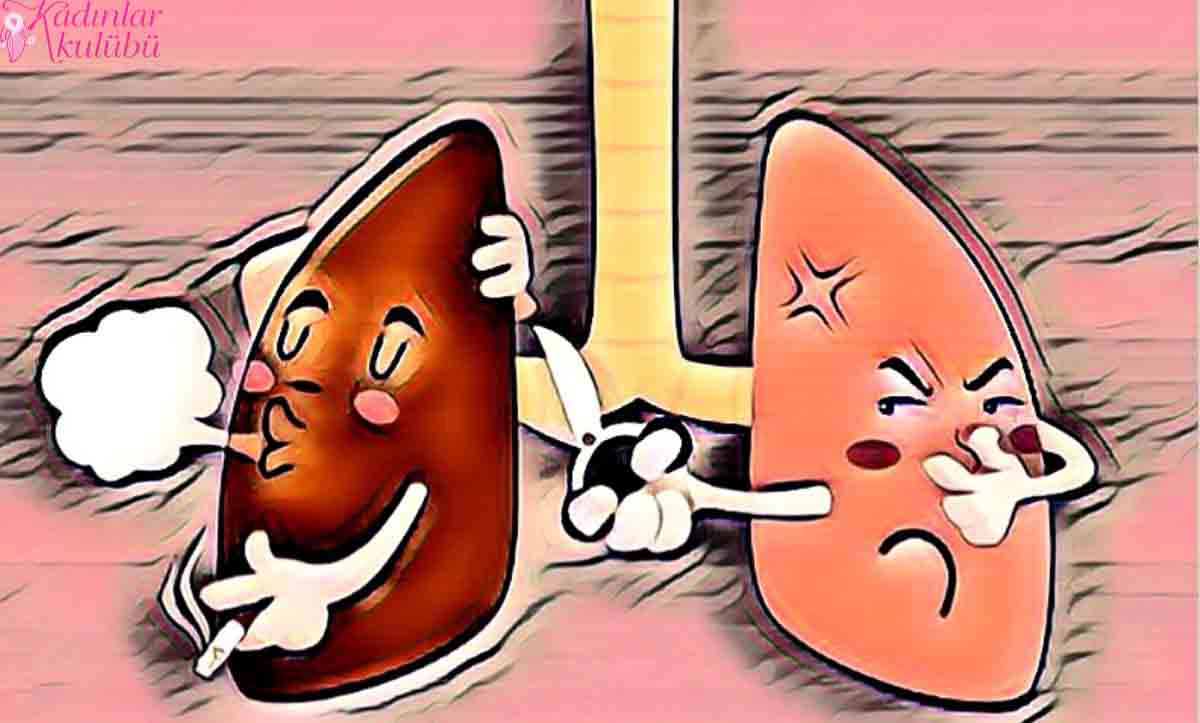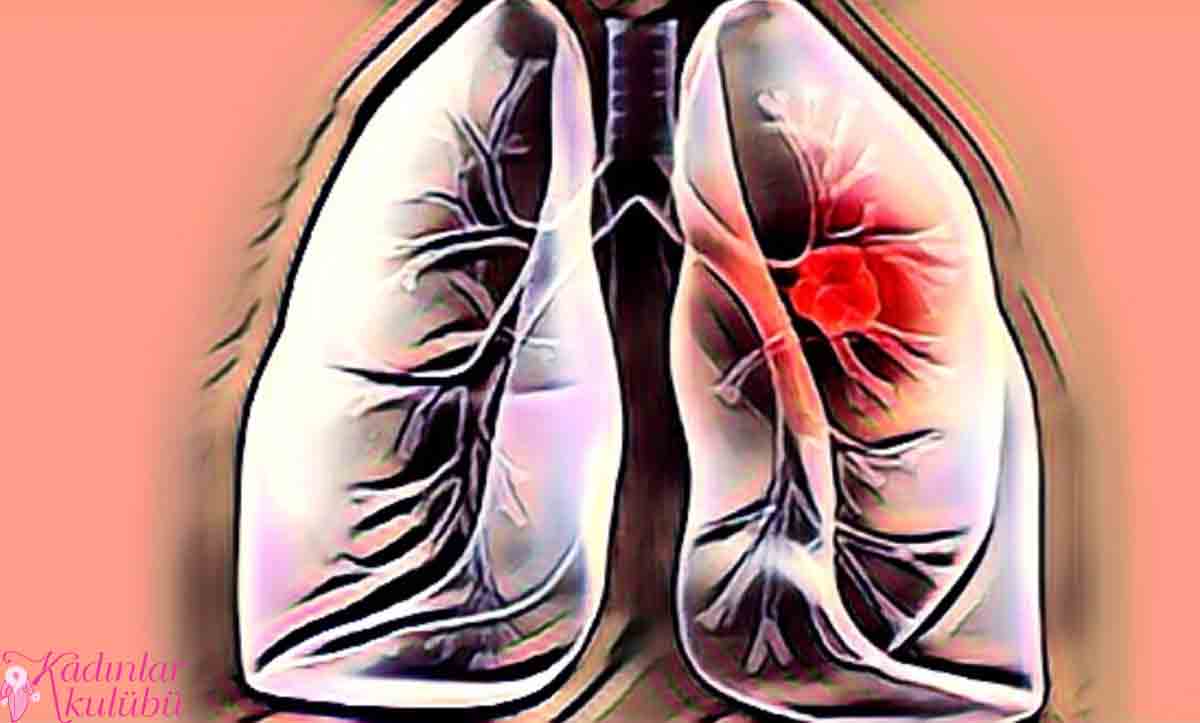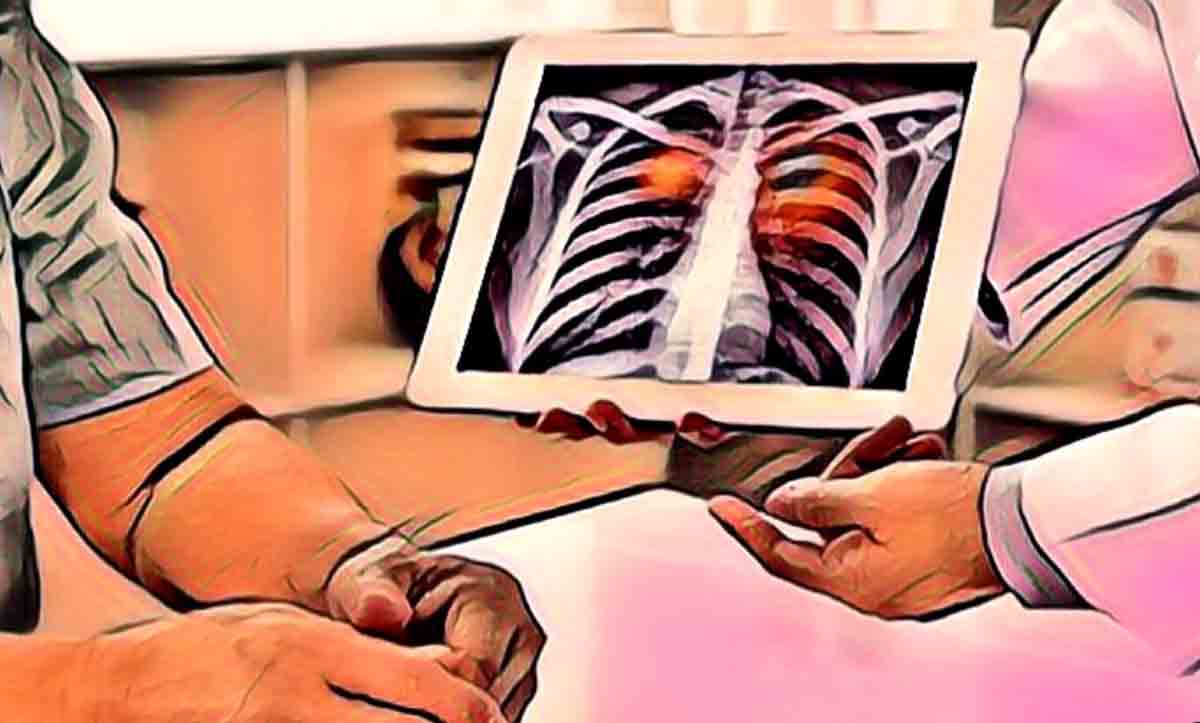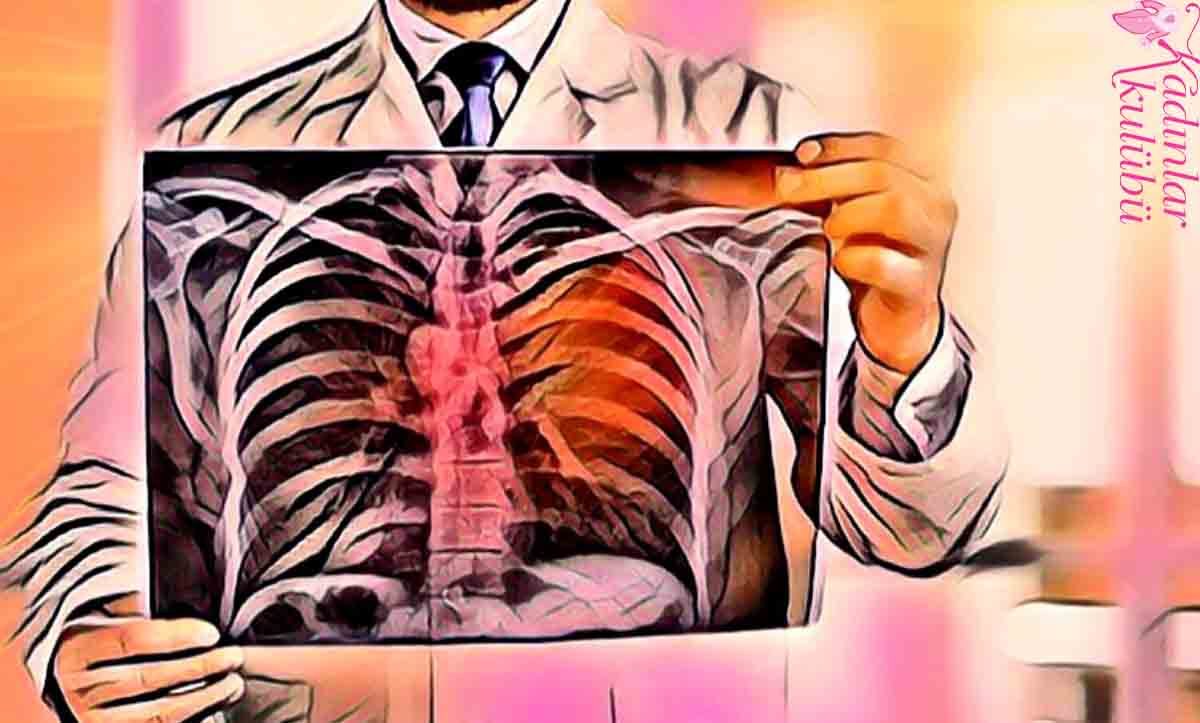What is Small Cell Lung Cancer? How Is It Diagnosed? Treatment

If you have extensive small cell lung cancer but didn’t notice any symptoms at first, you’re not alone. You may not feel any warning signs when this disease starts. Your doctor may discover this by accident. But it moves fast. When you have symptoms, it may have spread far beyond the lung where it started. This is when it reaches the broad stage.
What is Small Cell Lung Cancer?
This cancer is called a small cell compared to the size and form of the cells under the microscope. It begins in the hormone-producing cells of the lung. The cells change and begin to spiral out of control. Your physician will define your cancer as finite or extensive, depending on where the diseased cells have spread. They are finite unless they go beyond one of your lungs or nearby lymph nodes. When they move into these areas, it’s comprehensive.
About 1 in 3 individuals with this disorder learn that they are in the early or limited stages. But more than one receives diagnoses as they progress. This is because the small cell moves very quickly. By the time you find out you have it, it may have already spread to the other side of your chest. In some cases, it can happen in other parts of your body, such as your liver or bones.
Who are at risk?
 Small cell lung cancer deaths are caused by multiple cigarette smoking or exposure to secondhand smoke.
Small cell lung cancer deaths are caused by multiple cigarette smoking or exposure to secondhand smoke.What makes you most likely to get this disease is if you have smoked or used tobacco in the past. Heavy smokers face the greatest risk. If you live with a smoker, your luck increases. A few other things can increase your chances of getting this disease:
- Exposure to chemicals such as asbestos and arsenic
- Living in an area with a lot of air pollution
- Exposure to more radiation than usual with (long-term) medical treatment or tests such as CT scans
Fewer individuals are diagnosed with small cell lung cancer these days. One reason is that fewer people smoke. In addition, there is less tar in cigarettes on the market. If you smoke, there are still benefits to quitting after diagnosis. Not only will you feel better, but it will be easier for you to undergo treatment at the same time. It can also prolong your life.
Changes in the Body After Quitting Smoking
When your cancer is widespread, it will be difficult to get rid of them all. You may receive chemotherapy and radiation as it has been shown to treat small cell lung cancer better than other types.
In recent years, researchers have been doing more to find more appropriate ways to treat this less common type of lung cancer. It is impossible to predict outcomes for every person, but with current treatments, people with large small cell lung cancer can often live for 6 to 12 months.
Small Cell Lung Cancer Symptoms
 small cell lung cancer symptoms
small cell lung cancer symptomsYou may confuse some early symptoms with the common cold and other illnesses. You may have noticed:
- A cough that won’t get better
- spitting blood
- pain in your chest when you cough
- Shortness of breath
- Grunt
- hoarseness
- Tiredness
- Unexplained weight loss
- chest pain
- swallowing problem
But two-thirds of people with small cell lung cancer are not diagnosed until their condition reaches extensive stage.
Some symptoms may affect more than the lungs. Where you notice them depends on which parts of the body the cancer has reached. In the middle of them:
- Yellowish skin or eyes (from cancer in your liver)
- bone pain
- Headache or double vision (from cancer in your brain)
- tingling in your arms and legs (from cancer in your brain)
16 Signs of Cancer You Should Know About
Small Cell Lung Cancer Diagnosis
 Small cell lung cancer can be detected with a few common tests, such as a chest X-ray that produces detailed views of your lungs.
Small cell lung cancer can be detected with a few common tests, such as a chest X-ray that produces detailed views of your lungs.You will likely need at least a few tests before your doctor can decide whether you have small cell lung cancer. If they find out you have it, they’ll look to see how far it spreads. This will determine whether you are in the limited or comprehensive tier. With the finite small cell, the situation has not advanced much. You can’t find it outside of the lung, in the tissues in the middle of the lungs, or in nearby lymph nodes. Before performing more complex tests, your doctor will often examine you and check your lung function. They will ask about your symptoms and how long they have bothered you.
Biopsy
To diagnose small cell lung cancer, your doctor will take an impression of tissue or cells to examine under a microscope. They can take this sample or biopsy in various forms:
- Sputum cytology: Your doctor may ask you to produce some sputum. They will look at the mucus under a microscope to see if they can find cancer cells. This gives some useful information, but not enough to diagnose small cell lung cancer.
- Bronchoscopy: You may have a procedure to see inside your lungs. First, you will receive light anesthesia. The doctor will then pass a lighted tube through your mouth or nose into the airways leading to your lungs. They can see your lungs and take some fluid or tissue to work harder.
- Fine needle aspiration / core biopsy: A physician may also take a tissue sample by inserting a needle into your chest. With the help of an imaging scan, they can guide the needle through the chest wall into your lung.
- Thoracentesis: In this procedure, the physician may use a needle to draw fluid from the area between the lung and chest wall. They’ll look into that fluid for a random cancer cell.
- Thoracotomy:Your doctor may recommend that you have surgery under anesthesia so they can take a tissue sample after making an incision in the chest wall.
Medical Imaging
After identifying your cancer, your doctor may order imaging scans and other tests to learn more about how far it has spread:
CT scan:Your doctor may order this test to better understand where the other part of the body is, as well as the extent of the lung cancer.
PET-CT: Your CT may be paired with something called a PET (positron emission tomography) scan. For PET, you will receive an injection of radioactive sugar matter. Radioactive sugar acts as a spectator in your body to show which ones may be cancerous.
MRI (magnetic resonance imaging): This type of scanning uses magnetic fields instead of radiation to take pictures. However, it does not work properly with mobile organs such as the lungs. That’s why your doctor may only want you to look at other parts of your body.
Bone scan: Your doctor may order this test if they suspect that the cancer has spread to your bones. They will inject a radioactive tracer into one of your blood vessels to look for signs of spread. A special camera then looks for areas of your bone where cancer damage may occur.
You may prefer to have your biopsy and other tests reviewed by another lung cancer specialist before starting treatment. non-small cell lung cancerSometimes due to the more common form of this disease, which is small cell lung cancer can be misdiagnosed. Because treatment may differ in small cells, it is important to make sure your diagnosis is confirmed before you begin the next step of your medical care.
Treatment Options in Extensive Stage Small Cell Lung Cancer
 Small cell lung cancer treatment often begins with a combination of chemotherapy and immunotherapy. Treatment may also include radiation therapy and surgery.
Small cell lung cancer treatment often begins with a combination of chemotherapy and immunotherapy. Treatment may also include radiation therapy and surgery.About 2 in 3 individuals with small cell lung cancer (SCLC) have extensive-stage disease when doctors first find their cancer. This means that the condition has spread to the other side of your chest or elsewhere in your body, such as the liver, bones, brain, or adrenal glands.
Non-small cell lung carcinoma (NSCLC) is a random epithelial lung cancer other than small cell lung carcinoma (SCLC). NSCLC accounts for about 85% of all lung cancers. As a class, NSCLCs are relatively insensitive to chemotherapy compared to small cell carcinoma.
While surgery is often not an option if you have extensive SCLC, treatments are available to relieve symptoms and prolong your life.
Common Treatments for Comprehensive Small Cell Lung Cancer
Some options include:
Chemotherapy and immunotherapy
Chemo is often the treatment of choice for healthy individuals with extensive SCLC. Your doctor may recommend chemotherapy along with an immunotherapy drug that helps your body’s immune system fight cancer.
Doctors use the following combinations:
- The chemo drug etoposide is often given with the chemo drugs cisplatin or carboplatin.
- The immunotherapy drug atezolizumab (Tecentriq) can be given first with etoposide and carboplatin and then continued alone as maintenance therapy.
- The immunotherapy drug durvalumab (Imfiniz) is sometimes combined with etoposide and carboplatin.
In addition, two new drugs have recently shown promise for individuals with extensive SCLC whose cancer has progressed after standard treatment:
- The immunotherapy drugs nivolumab (Opdivo) and pembrolizumab (Keytruda) may be options for individuals with advanced cancer after chemotherapy and for at least one other treatment line.
Radiation
If your cancer responds well to chemo and immunotherapy, your doctor may recommend radiation therapy to the brain to reduce the chance of the cancer spreading there. You may also receive radiation to your chest. Research shows that this treatment can help people with extensive SCLC live longer. You may also receive radiation therapy for other parts of your body where the cancer has spread, to relieve symptoms and improve your quality of life.
laser surgery
If your cancer is causing bleeding or shortness of breath, laser surgery can help relieve these symptoms. This treatment uses a laser beam to kill diseased cells.
Palliative Care
Palliative care is a valuable supportive approach that can help control your pain and improve your well-being. As a module of palliative care, you can receive standard treatments along with pain relief medication, supplemental oxygen, nutritional guidance, massage, occupational therapy, spiritual counseling, integrative treatments and more.
In particular, palliative procedures can help improve:
- Shortness of breath
- Tiredness
- Nausea
- Constipation
- Loss of appetite
- Anxiety and depression
How is SCLC Treatment Decided?
Understanding the goals of your treatment is valuable. If you have extensive SCLC, current treatments probably won’t cure your cancer. Instead, your doctor will use them to slow the growth of tumors, prolong your life, and relieve your symptoms. Your doctor can help you decide which treatment is most adequate.
Options may depend on:
- your general health
- how far your cancer has spread
- Other medical conditions you have
- Your personal preferences
Tips for Living Well with Small Cell Lung Cancer
These lifestyle habits can help you feel better and live more adequately:
- Eat a healthy diet with lots of fruits and vegetables.
- If possible, train daily.
- Try a complementary approach such as meditation, yoga, or massage.
- Ask your doctor about a pulmonary rehabilitation program that can help you breathe better.
- Sleep properly every night.
- Rest when you are tired during the day.
- Join a base set so you can connect with other individuals who understand your situation.
What Should Be Considered in Cancer Treatment?
- On-Site Comments















Comment